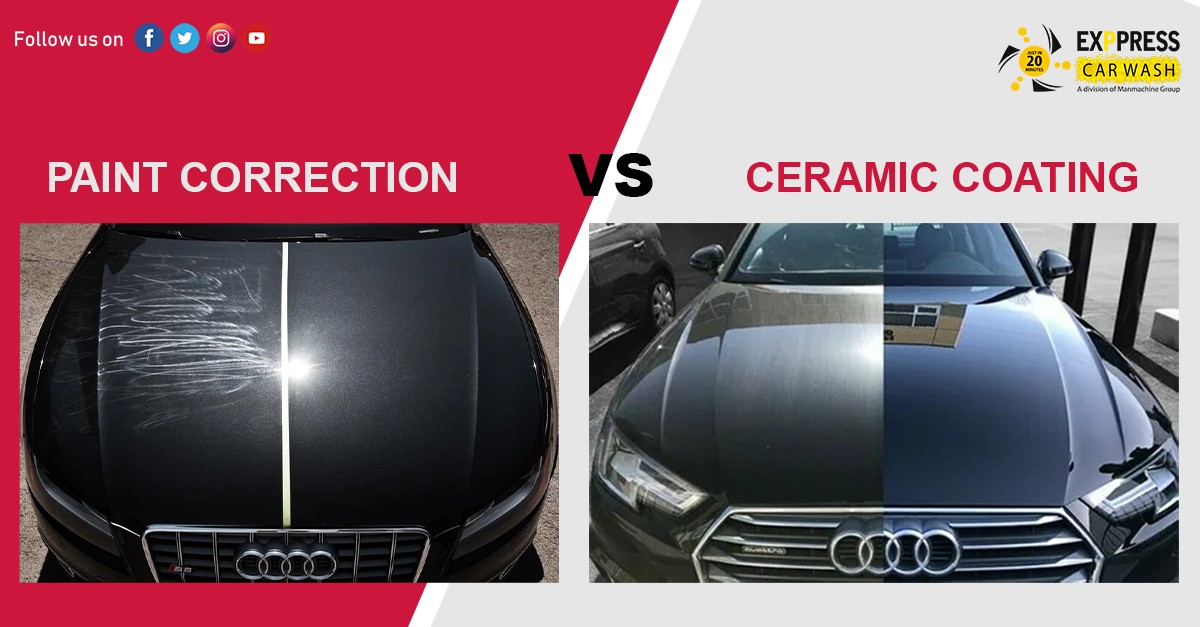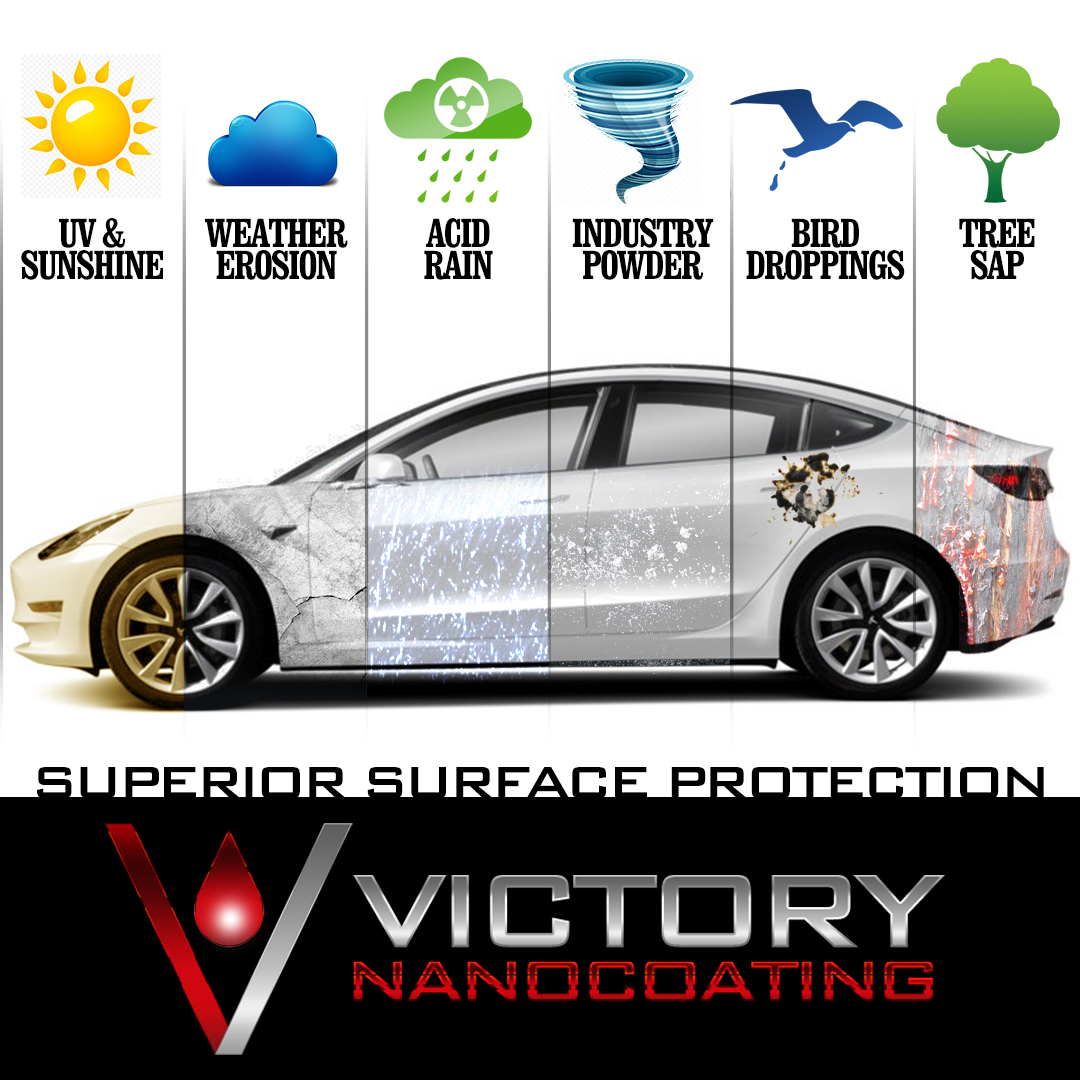Ceramic Coating: A Comprehensive Overview to Protecting Your Automobile's Paint
Ceramic Coating: A Comprehensive Overview to Protecting Your Automobile's Paint
Blog Article
Discovering the Science Behind Ceramic Finishing and Its Effect On Auto Explaining
The application of ceramic coating in vehicle detailing represents a significant innovation in vehicle care, rooted in its innovative chemical buildings, mainly silica dioxide and titanium dioxide. As we discover the details of the application process and the lasting ramifications for automobile upkeep, it comes to be clear that the selection of ceramic coating can essentially change one's technique to auto care.
What Is Ceramic Finishing?
Ceramic coating is a modern option that has acquired popularity in the vehicle describing market for its capability to supply long-lasting protection for vehicle surface areas. This innovative safety layer is commonly composed of silica dioxide (SiO2), which forms a strong bond with the automobile's paint, creating a durable shield against environmental contaminants. Unlike traditional wax or sealers, ceramic coatings use superior resistance to UV rays, chemical spots, and physical abrasions.
The application of ceramic layer includes a careful procedure, where the lorry's surface area is completely cleaned up and decontaminated before the covering is used (Ceramic Coating). When healed, the finishing improves the lorry's gloss, deepness, and clearness, giving a showroom-quality surface that lasts for many years. One of the key benefits of ceramic covering is its hydrophobic properties, which drive away water and dust, making maintenance simpler and decreasing the frequency of laundries
The Chemistry of Ceramic Layer
An essential aspect of ceramic layer hinges on its chemical make-up, mostly identified by the presence of silica dioxide (SiO2) This substance is integral to the development of a resilient, safety layer that bonds chemically to the car's surface area. When used, the SiO2 molecules go through a procedure called polymerization, in which they develop a network of interconnected frameworks. This causes a robust, hydrophobic surface area that repels water and impurities.
Along with SiO2, lots of ceramic coverings include titanium dioxide (TiO2) and various other additives to enhance their efficiency characteristics. TiO2, for circumstances, adds to enhanced hardness and chemical resistance. The communication in between these compounds produces an unique molecular structure that offers a high level of protection against environmental variables such as UV rays, acid rainfall, and oxidation.
Furthermore, the application process typically involves a careful prep work of the surface area to make certain optimum attachment of the finishing. This chemistry not only ensures a durable finish yet likewise boosts the aesthetic appeal of the vehicle. Recognizing the intricate chemistry behind ceramic coatings is necessary for outlining specialists who intend to offer remarkable defense and longevity for their customers' cars.
Benefits of Ceramic Covering
While detailing professionals often highlight the advantages of ceramic finishings, their advantages extend far beyond aesthetics. Ceramic coverings develop a hydrophobic surface that fends off water, crud, and dirt, substantially lowering the regularity of laundries and the effort called for to preserve a lorry's look.
Additionally, ceramic finishes enhance the durability of the automobile's surface. Unlike standard waxes or sealers, which might last a few months, ceramic finishings can sustain for several years, supplying a long-term solution for auto care. This resilience equates to set you back financial savings, as owners are less most likely to require constant reapplication.
Furthermore, ceramic layers are immune to chemical discolorations and etching, which can occur from acidic materials click over here now like bird droppings or tree sap. This resistance not just protects the car's looks however also reduces possible damages - Ceramic Coating. On the whole, the financial investment in ceramic layer supplies automobile proprietors a substantial return in regards to defense, simplicity of maintenance, and resilient aesthetic charm, making it an increasingly popular selection in the world of vehicle describing
Application Process Discussed

When the surface is properly prepared, the ceramic covering can be applied. It is commonly carried out in a regulated atmosphere, such as a garage or detailing bay, to avoid contamination from dirt and particles. Using an applicator pad, the technician applies the layer in small sections, working in a crosshatch pattern to make certain also protection. It is essential to adhere to the manufacturer's guidelines relating to application thickness and healing times.
Once treated, the ceramic layer develops a strong bond with the paint, offering boosted defense and a glossy finish. Appropriate application is crucial to make best use of the durability and efficiency of the ceramic finishing.

Long-term Impact on Lorry Care
The long-term effect of ceramic coating on vehicle treatment is considerable, as it essentially alters how proprietors preserve their cars. By producing a long lasting, hydrophobic layer on the automobile's surface, ceramic finishes minimize the adherence of dirt, grime, and pollutants. This building reduces the regularity of washing called for, inevitably saving water and cleaning items.
Additionally, the UV protection used by ceramic layers assists to avoid oxidation and fading of the automobile's paint, preserving its visual allure and resale value with time - Ceramic Coating. This safety barrier additionally lowers the probability of scrapes and swirl marks, which are common concerns in traditional paint surfaces
Additionally, ceramic coverings help with simpler upkeep, enabling owners to clean their cars with minimal effort. The smooth surface area makes it difficult for contaminants to bond, allowing less complex removal throughout routine cleaning.
Over time, the investment in ceramic coating may cause cost savings in lorry care product or services. On the whole, the sustaining advantages of ceramic finishings not only enhance the appearance of automobiles however also add to a more lasting and pop over here efficient technique to vehicle maintenance.
Final Thought
Finally, the application of ceramic finishing stands for a considerable improvement address in vehicle describing, driven by its distinct chemical make-up of silica dioxide and titanium dioxide. This technology not only boosts the aesthetic charm of vehicles but additionally offers durable security versus ecological hazards and put on. The long-lasting advantages, including lowered maintenance frequency and boosted longevity, underscore the value of ceramic finishings as a crucial investment for keeping lorry appearance and integrity over time.

Report this page